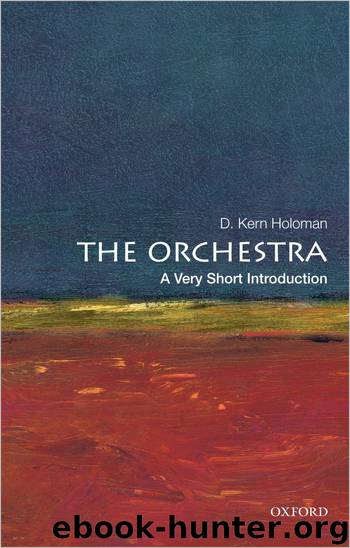The Orchestra by Holoman D. Kern

Author:Holoman, D. Kern
Language: eng
Format: epub
Publisher: Oxford University Press, USA
Published: 2012-01-09T16:00:00+00:00
Programming
Confecting the programs, both the individual concerts and across an orchestral season, is a balancing act played out three or four years in advance of when the performance actually happens. The exercise attempts to plot satisfying degrees of celebrity and familiarity on the one hand, and space to explore on the other. Agents broker the calendars of soloists and guest conductors; seasons are equally determined by such factors as when the chorus can be available and what the rival events in town might be. Every concert has to draw and retain the attention of the paying guests, but it must also have intrinsic intellectual merit. The overall season needs a natural rhythm of its own, though this is less significant a matter now that full-season subscribers are much less common.
The formulaic orchestral program—a “curtain-raising” overture, the concerto, intermission, and then the symphony—was never more than a template, and over time the place of honor has migrated from the beginning of the concert to the end. (A similar shift in priorities informs the genre itself, as the front-loaded symphonies of Beethoven and his predecessors yield their weight to the finales of the Ninth, and the works of Brahms, Tchaikovsky, and Mahler.) At the height of his stardom, the pianist Vladimir Horowitz would play only at the close of a concert. From the earliest decades of subscription seasons, in fact, public affection for the concerto and its soloist threatened to overcome all the other programming interests, as orchestras sought to deliver such first-level talent as Clara Schumann playing her husband’s concerto, the Norwegian violinist Ole Bull, or the German-American cello virtuoso Victor Herbert.
Among the pitfalls of programming are concerts that exceed the attention span or draw away from the featured work (the Verdi Requiem preceded by the orchestrated Verdi string quartet) or those that look more interesting on paper than they can be in real life (the Vivaldi “Seasons” concertos played front to back). Single-composer concerts, all-Brahms or all-Wagner, succeed only when they manage to focus the mind on questions of growth or interconnection; otherwise an apt but challenging pairing, say Wagner and Fauré, is more likely to seem distinctive. Orchestral repertoire is subject to vogues, for instance the enthusiasm for Astor Piazzolla and Silvestre Revueltas that broke out in the late 1990s, which require music directors to walk the fine line between recognizing the fad and pandering to it.
Seasons begin and end with grand events usually involving large forces, as in Mahler’s “Resurrection” Symphony No. 2 or Carl Orff’s Carmina burana. Many communities have long-established holiday traditions. The Easter weekend concert spirituel in Paris was a contemplative church or churchlike concert and, before that the name given to the season of orchestra concerts that took place during Lent, when the theaters were closed. The Neujahrskonzert of the Vienna Philharmonic every New Year’s morning wends a predictable course through music of the Strausses and other Viennese masters of good feeling, broadcast to 50 million people across the world. Pops and Proms repertoire
Download
This site does not store any files on its server. We only index and link to content provided by other sites. Please contact the content providers to delete copyright contents if any and email us, we'll remove relevant links or contents immediately.
The Goal (Off-Campus #4) by Elle Kennedy(13541)
Kathy Andrews Collection by Kathy Andrews(11726)
Diary of a Player by Brad Paisley(7487)
What Does This Button Do? by Bruce Dickinson(6133)
Assassin’s Fate by Robin Hobb(6123)
Big Little Lies by Liane Moriarty(5697)
Altered Sensations by David Pantalony(5043)
Pale Blue Dot by Carl Sagan(4906)
Sticky Fingers by Joe Hagan(4100)
The Death of the Heart by Elizabeth Bowen(3550)
The Heroin Diaries by Nikki Sixx(3492)
Beneath These Shadows by Meghan March(3261)
Confessions of a Video Vixen by Karrine Steffans(3240)
How Music Works by David Byrne(3182)
The Help by Kathryn Stockett(3082)
Jam by Jam (epub)(3019)
Harry Potter 4 - Harry Potter and The Goblet of Fire by J.K.Rowling(2984)
Strange Fascination: David Bowie: The Definitive Story by David Buckley(2797)
Petty: The Biography by Warren Zanes(2696)
